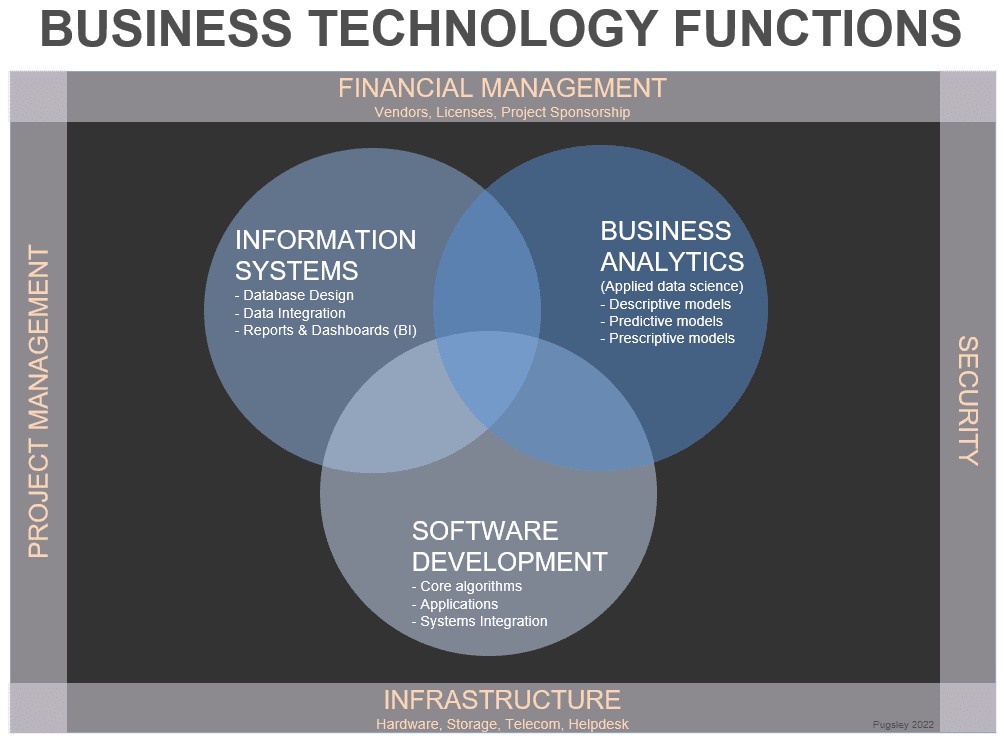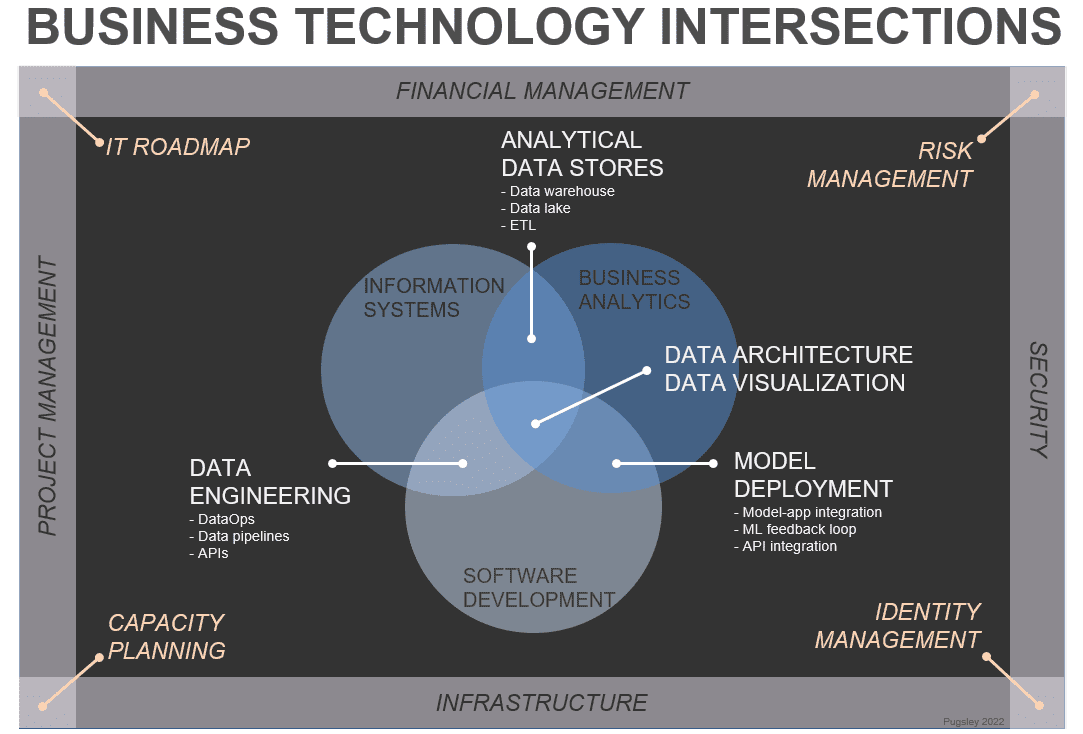Full Stack Everything? Organizational Intersections Between Data Science, Dev & Tech
Breakthrough value is found when teams collaborate at their intersections to come up with innovative solutions.
Each company has its own terminology and organization structure for managing business technology. The terminology may have evolved for decades, or may be imposed by a leader seeking to shape the branding of the departments. The organization structure may match industry norms, or may be unique to the special needs of the company. But what is common to all organizations is the need to speak a common language about what each department or team does, and a consistent effort to bridge the gaps between the teams.
The following diagram shows a typical breakdown of technology functions within a large organization:

The outer functions are equally important to the inner functions, but the outer layer plays an enabling role while the inner functions create the core technology deliverables. Each function seeks to hire and train specialized experts at the core skills for the function. And often the boundaries between groups grow, intentionally due to turf battles, or by accident due to neglected relationship building. Friction, delays and inefficiency grow at those intersections.
The following diagram shows the shared intersections that become important opportunities to create business value.

This diagram is by no means comprehensive, but shows examples of how teams can cooperate on key business needs. None of these intersected areas will be as effective or innovative without cooperation.
On the outer layer, the Project Management function, for example, could never deliver an authoritative capacity plan or IT roadmap without heavy input from the other functions. And the security team needs close cooperation to understand the costs and priorities for risk management and to create an effective identity management scheme. Yet the departments often attempt to do these things alone.
On the inner Venn diagram we have the three key functions of Information Systems, Business Analytics, and Software Development. Each of those functions requires highly specialize skills, and it is very rare to find a unicorn “full data stack” analyst/data engineer/developer. There needs to be active collaboration between teams to deploy models, engineer data pipelines and create analytical data stores.
To increase collaboration at the intersections it is important to:
- Create a common language and awareness of department roles and responsibilities across teams
- Invest in cross-team events and networking opportunities
- Encourage “tour of duty” rotations for staff through other technology functions
- Staff projects with cross-functional teams, with resources from multiple departments
- Hold regular knowledge sharing and project overview meetings between departments
The time and effort to encourage cooperation at the intersection between your technology functions will pay dividends over time. One first step is to use these diagrams as a communication device to begin the conversation about where those boundaries lie and how to bridge them.
Stan Pugsley is a freelance data engineering and analytics consultant based in Salt Lake City, UT. He is also a lecturer at the University of Utah Eccles School of Business. You can reach the author via email.
